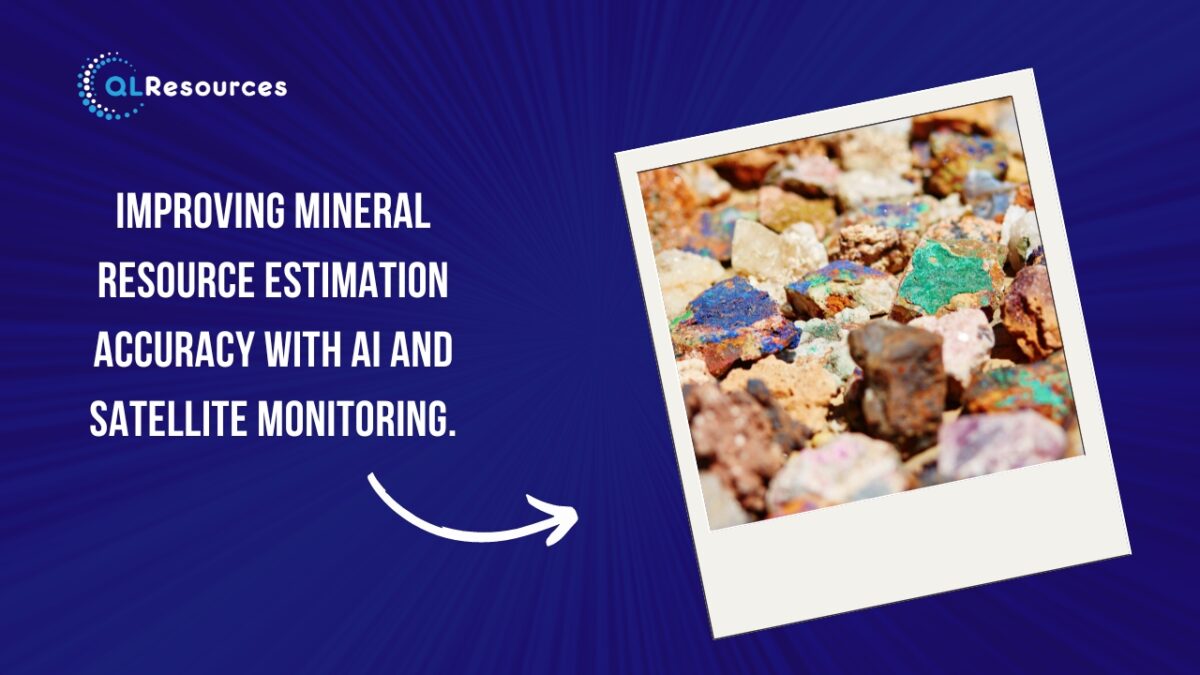Mineral resource estimation is a critical aspect of mining, as it involves estimating the quantity and quality of minerals in the deposit. Accurate resource estimation is essential for mining companies to make informed decisions about where to focus their extraction efforts and how to optimise their operations. However, traditional resource estimation techniques can be time-consuming and prone to errors. Fortunately, the combination of artificial intelligence (AI) and satellite monitoring can significantly improve the accuracy of mineral resource estimation. Here are some ways AI and satellite monitoring can achieve this:
Better Data Collection
AI can help mining companies collect more accurate and comprehensive data about the mineral deposit. This includes data collected from various sources such as satellite imagery, drones, and ground sensors. Machine learning algorithms can then process and analyse this data to identify patterns, anomalies, and other important insights. This can help mining companies better understand the characteristics of the mineral deposit and optimise their extraction methods.
Accurate Mapping
AI can help improve the accuracy of mapping the mineral deposit by using advanced algorithms to identify the most appropriate statistical models to represent the data. This can help mining companies create more accurate models of the deposit, which can be used to optimise mining operations. Moreover, satellite monitoring can provide high-resolution images of the deposit which can be used to identify areas with high mineral concentration.
Improved Geospatial Analysis
Satellite monitoring can provide mining companies with an abundance of geospatial data that can be analysed using machine learning algorithms. These algorithms can identify patterns in the data, such as the sise and shape of mineral deposits, that can be used to improve resource estimation accuracy. Geospatial data can be combined with other data sources, such as geological surveys, to create a more accurate picture of the mineral deposit.
Real-Time Monitoring
AI and satellite monitoring can provide real-time monitoring of mining operations, which can help improve resource estimation accuracy. For example, satellite imagery can be used to monitor changes in the mineral deposit over time, while sensors can be used to monitor the condition of mining equipment and detect anomalies. This real-time monitoring can help mining companies identify areas where they can improve their operations and optimise their resource extraction.
Improved Modeling
AI can help mining companies create more accurate models of the mineral deposit by analysing large datasets and identifying the most appropriate statistical models to represent the data. These models can be used to estimate the quantity and quality of minerals in the deposit, as well as to identify areas of the deposit that are most valuable. This information can be used to optimise mining operations and increase the efficiency of resource extraction.
Increased Efficiency
AI and satellite monitoring can help mining companies increase the efficiency of their operations by identifying areas of the deposit that are most valuable and focusing their extraction efforts accordingly. This can help reduce waste and increase the overall yield of the mining operation. Moreover, satellite monitoring can provide a real-time analysis of the mineral deposit, which can be used to optimise the location of mining equipment and reduce the overall time required for the extraction process.
Improved Safety
AI and satellite monitoring can help improve safety in mining operations by providing real-time monitoring of equipment and personnel. For example, sensors can be used to monitor the condition of mining equipment and alert operators to any potential issues before they become serious. This can help reduce the risk of accidents and improve overall safety in the mine.
In conclusion, AI and satellite monitoring can significantly improve the accuracy of mineral resource estimation in mining operations. By using advanced algorithms to analyse large datasets and providing real-time monitoring of mining operations, mining companies can optimise their resource extraction and increase their overall efficiency. Furthermore, these technologies can help improve safety and reduce the environmental impact of mining operations, making the industry more sustainable and socially responsible. As these technologies continue to evolve and become more advanced, the accuracy and efficiency of mineral resource estimation.

